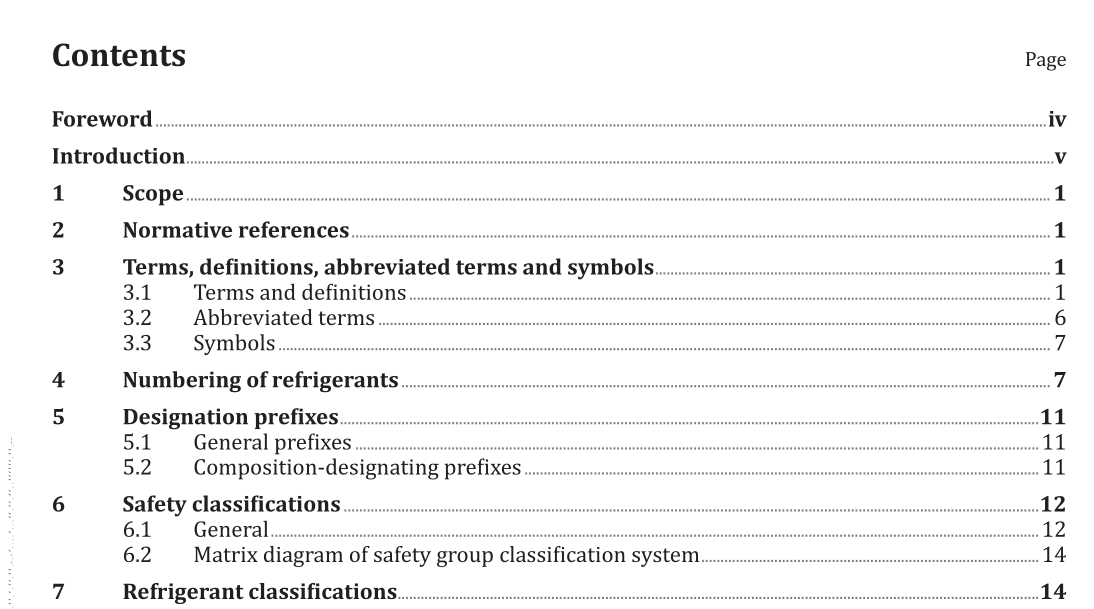ISO 817:2014 pdf download.Refrigerants — Designation and safety classification
1 Scope
This International Standard provides an unambiguous system for assigning designations to refrigerants. It also establishes a system for assigning a safety classification to refrigerants based on toxicity and flammability data, and provides a means of determining the refrigerant concentration limit. Tables listing the refrigerant designations, safety classifications and the refrigerant concentration limits are included based on data made available.
4.2.6 The number of chlorine (Cl) atoms in the compound is found by subtracting the sum of fluorine (F), bromine (Br), iodine (I) and hydrogen (H) atoms from the total number of atoms that can be connected to the carbon (C) atoms. For saturated organic compounds, this number is 2n + 2, where n is the number of carbon atoms. The number is 2n for compounds with one double bond and saturated cyclic compounds.
4.2.7 The carbon atoms shall be numbered with the number 1 assigned to the end carbon with the greatest number of halogen atoms, and the following carbon atoms are numbered sequentially as they appear on a straight chain. In the case where both end carbons contain the same number of (but different) halogen atoms, the number 1 shall be assigned to the end carbon having the largest number of bromine then chlorine then fluorine, and then iodine atoms. If the compound is an olefin, then the end carbon nearest to the double bond will be assigned the number 1, as the presence of a double bond in the back bone of the molecule has priority over substituent groups on the molecule.
4.2.8 For cyclic compounds, the letter C is used before the identifying refrigerant numbers. (e.g. R-C318, PFC-C318).
4.2.9 In the case of isomers in the ethane series, each shall have the same number, with the most symmetrical one indicated by the number alone. As the isomers become more and more unsymmetrical, successive lower case letters (i.e. a, b, or c) are appended. Symmetry is determined by first summing the atomic mass of the halogen and hydrogen atoms attached to each carbon atom. One sum is subtracted from the other; the smaller the absolute value of the difference, the more symmetrical the isomer.
For halogenated derivatives of cyclopropane, the carbon atom with the largest sum of attached atomic masses shall be considered the central carbon atom; for these compounds, the first appended letter is omitted. The second appended letter indicates the relative symmetry of the substituents on the end carbon atoms (C1 and C3). Symmetry is determined by first summing the atomic masses of the halogen and hydrogen atoms attached to the C1 and C3 carbon atoms. One sum is subtracted from the other; the smaller the absolute value of this difference, the more symmetrical the isomer. In contrast to the ethane series, however, the most symmetrical isomer has a second appended letter of a (as opposed to no appended letter for ethane isomers); increasingly asymmetrical isomers are assigned successive letters. Appended letters are omitted when no isomers are possible, and the number alone represents the molecular structure unequivocally; for example, CF 3 CF 2 CF 3 is designated R-218, not R218ca. An example of this system is given in Annex A. Propane series isomers containing bromine are not covered by the appended letters given in 4.2.11 and Table 2.
ISO 817:2014 pdf download
